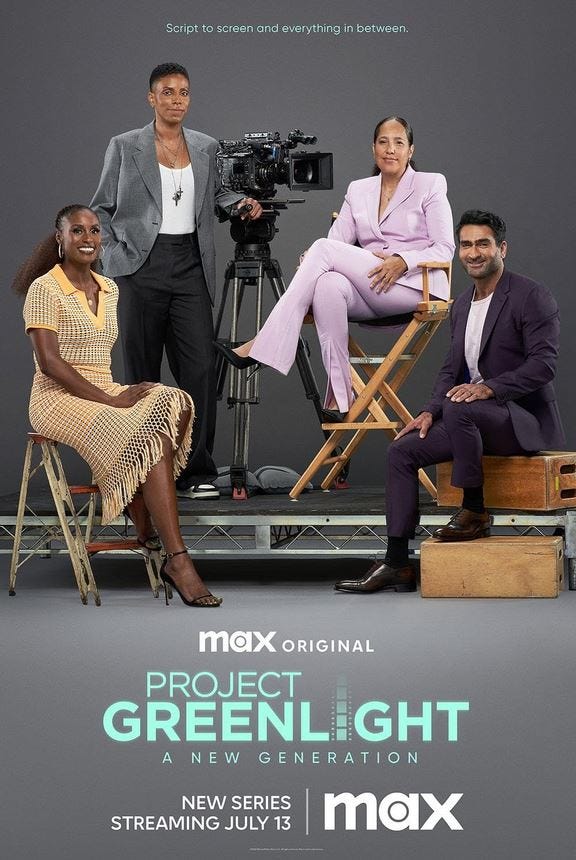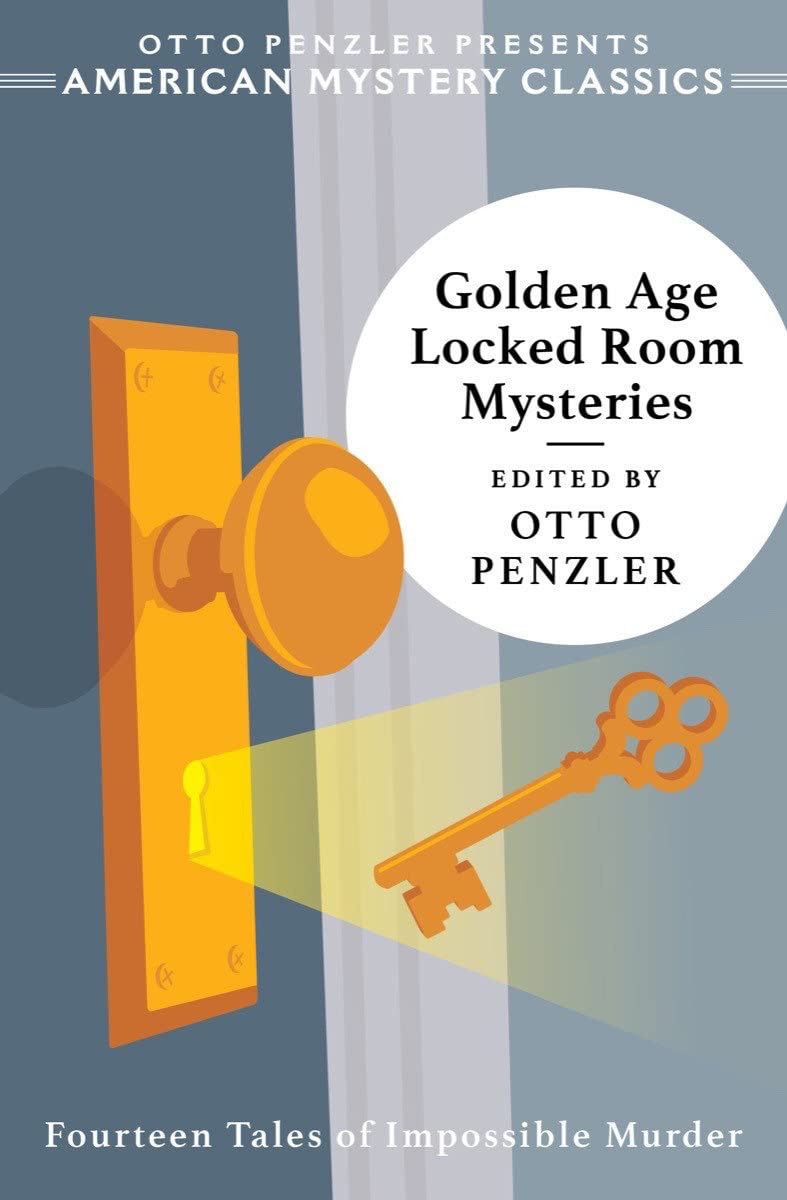C&C 10: Project Greenlight, My Secret Shame
Plus an anthology that bats 1.000 and a signature cocktail
It never feels good, catching yourself in a lie. Especially the self-satisfied kind.
For years, I’ve smugly declared that I have never hate-watched anything. Then I read that Project Greenlight had been revived on Max with little fanfare, and the shameful memories of the previous four seasons came rolling back.
On the subject of reality TV, I agree with comedian Dana Gould—“You’re watching an amateur production of nothing”—but conned myself into believing that Greenlight had educational value. Each season follows an aspiring filmmaker or filmmakers selected by Hollywood luminaries to put together a movie, with every arduous step documented. The show’s premise has always been fundamentally dishonest: we’re going to put an untested person in an untenable position. True, there’s never enough time or money when making a movie. But indie filmmakers are at least driven by their passion, and can establish their own schedules and budgets. And yes, during the heyday of the studio system, directors had scripts foisted on them, but they also had a lot full of salaried craftspeople to turn to, plus they could punch out at five o’clock and go to the Brown Derby.
The previous season of Greenlight, from 2015, is best remembered for a tone-deaf conversation about diversity. The reboot, Project Greenlight: A New Generation, attempts to redress that issue from the outset. Its mentors aren’t white dudes but Issa Rae, Kumail Nanjiani, and Gina Prince-Bythewood, and for the first time, the chosen director would be a woman.
The show still has its rotten core, asking a rookie “winner” to solve problems created solely by the TV series’ timetable. Only now it has the added bonus of the proceedings sounding like they were vetted by Bonnie in Human Resources and a dedicated team of lawyers. It’s ten episodes of people seething politely.
I blew through the whole season in three days. And I never do that.
In the opening episode, the field of ten finalists is winnowed to three. Two have personal stories that link into the proposed film, while the third made what is described by the judges as the best demo scene. With every competition reduced to a battle of narratives nowadays, I was happy that talent won out.
The victor, the reserved, watchful writer/director Meko Winbush, is hip to the show’s agenda. She regularly acknowledges on camera the burden of regularly appearing on camera. A key member of her creative team bails because he tires of the circus aspect of the shoot. The situation comes to a head during production of this season’s film, Gray Matter, when Winbush starts killing her microphone during rehearsals with her cast, regarding these moments of collaboration as private, and the movie crew openly rebels against the TV crew. Network executives ultimately have to intervene, with one of them blowing the Greenlight gaff by saying HBO only bankrolled Gray Matter for the TV series surrounding it, the point of which is to see Winbush making choices—and, specifically, mistakes.
Winbush is responsible for her share of unforced errors, most related to the Gray Matter script. It was fascinating to watch Greenlight during the writers’ strike. There’s a lot of chatter about the importance of the screenplay, commissioned for this season—a story about a family of women of color with superpowers on the run from shadowy forces, it appears to be superficially similar to the 2018 film Fast Color—but we don’t learn the name of the writer, Philip Gelatt, until the second episode. What we do hear, repeatedly, is that no one is satisfied with the current draft and there’s a general consensus about what changes need to be made. But those notes are never addressed, despite everyone talking about them constantly (including during a punch-up session with Gelatt and three other writers arranged at Winbush’s request). Prince-Bythewood, who takes time from editing her film The Woman King (2022) to offer counsel, laments that Winbush may have only heeded the first part of her suggestion to fight for her vision while listening to every idea. This apparent disconnect provides much of this season’s tension. It’s like witnessing a slow-motion collision. You keep waiting for someone to pull the plug or admit they’ve made a multi-million-dollar blunder. That reckoning comes in a screening room, when Gray Matter is finally unveiled and it’s instantly apparent that the producers and mentors dislike the finished product—and also know that, owing to decisions made and advice ignored by Winbush during the shoot, there’s no viable path to salvaging it. But hey, they still have a premiere. And why not? Getting any movie made, even a disappointing one, is hard work.
Which leads to the most baffling part of my Project Greenlight history. I have seen every episode but none of the films the show has yielded: Stolen Summer (2002), The Battle of Shaker Heights (2003), Feast (2005), The Leisure Class (2015). Gray Matter, now playing on Max, joins the list. Judging from the few reviews, I’m not missing much.
My favorite moment of the season comes early, when a producer says of one of the ten finalists, a music video director who comes on strong in her recorded interview—and will be even more so in person—that anybody that confident has to have something to back it up. I thought, “Is this your first day in Hollywood? Or on Earth?”
What I’m Reading
Golden Age Locked Room Mysteries, edited by Otto Penzler (2022). In his introduction, Penzler explains that the fourteen short stories in this collection are really more “impossible crime” tales than literal locked room mysteries. He also warns that readers “will inevitably be disappointed” by the solutions “just as explanations of stage illusions exterminate the spell of magic.” On that point, we disagree. The outcomes of these stories are uniformly ridiculous, the authors leaning into that quality with such glee that it’s infectious. The winner here is Ellery Queen’s novella-length masterpiece “The House of Haunts,” aka “The Lamp of God,” from 1935. “Whistler’s Murder” (1946) is first-rate foolishness from Fredric Brown; no one who reads this yarn will forget the killer’s identity. Locked-room masters John Dickson Carr and Clayton Rawson are on hand, as are Erle Stanley Gardner, Craig Rice, and Cornell Woolrich. It’s a unicorn among anthologies, in that there’s not a bad story in the bunch.
What I’m Drinking
How did I forget that there’s a Renee Patrick cocktail? Rosemarie and I plotted much of Design for Dying, the first Lillian Frost/Edith Head mystery, at Seattle’s Zig Zag Café. We brought a copy of the book there on publication day, the occasion marked by the creation of an original libation by bartender extraordinaire Erik Hakkinen, now of Roquette.
The Renee Patrick
1 oz. mezcal
½ oz. Campari
½ oz. grapefruit liqueur
½ oz. falernum
1 oz. lime juice
Shake. Strain. Garnish with a lime peel. Serve it up or over fresh ice as a long drink, which is Erik’s preference and mine now that I’ve rediscovered it in time for the August heat.




Project Greenlight was always painful for me to watch, although I haven't seen the last two seasons. I could see each crisis coming from a mile away. That said, the general note I've heard about documentaries showing the making of moves is that the docs are always way more fascinating than the finished films. The same might be true of the making of my film...if it was documented. ;)